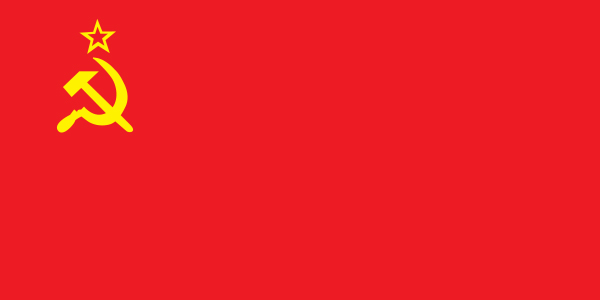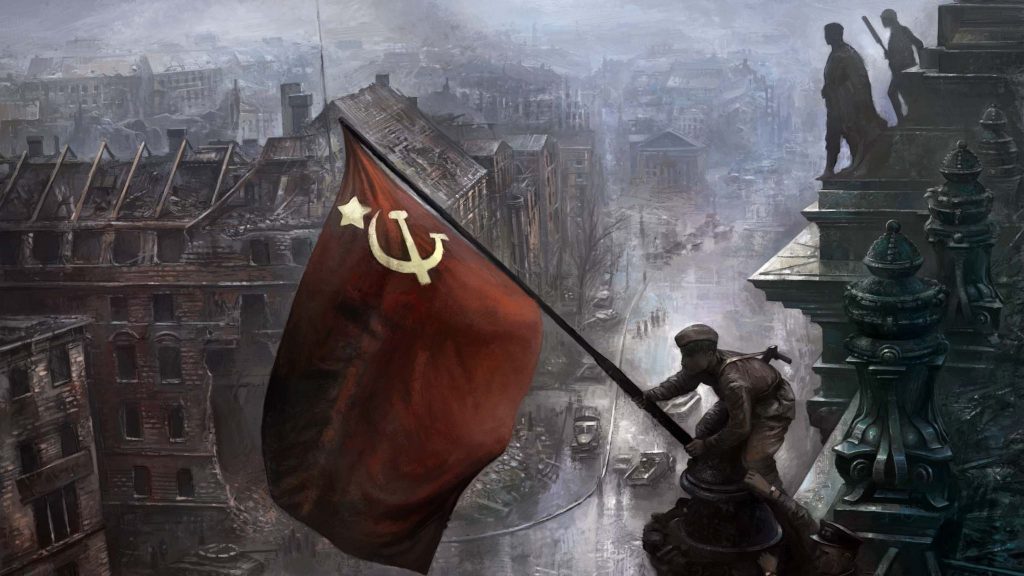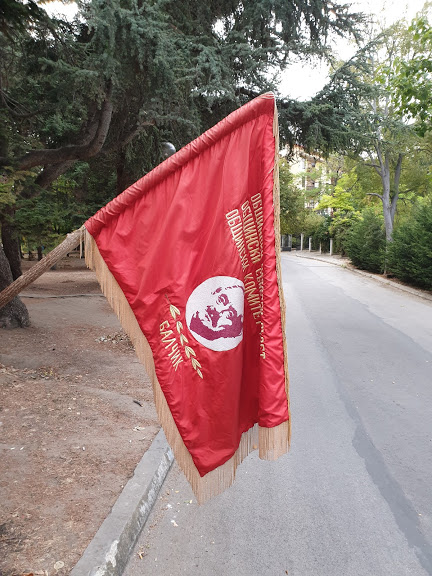Introduction to the flag of the Soviet Union

The flag of the Soviet Union is one of the most easily recognizable flags on earth. Its symbolism has gone on to be used in countless methods, from selling capitalist products to communist guerillas, long after the USSR collapsed. Today, we’re going to look into the story of the flag of the Soviet Union.
What Does the Flag of the Soviet Union Mean?

The design and symbolism of the flag of the Soviet Union all emerged during the Russian Revolution. The flag is also an international symbol of the communist movement as a whole. The nicknames for the flag were The Hammer and Sickle and The Red Banner.
The red flag that formed the backdrop of the flag was a traditional revolutionary symbol long before the Russian revolution in 1917. Its incorporation into the flag paid tribute to the international aspect of workers’ revolution. The color red honors the red flag of the Paris Commune of 1871.
The iconic hammer and sickle design was a modern industrial touch adopted from the Russian Revolution. The union of the hammer (workers) and the sickle (peasants) represents the victorious and enduring revolutionary alliance. The famous emblem is topped by a gold-bordered red star representing the Communist Party of the Soviet Union.
During the Russian Soviet Republic’s establishment, Vladimir Lenin and his comrades had considered the inclusion of a sword symbol in addition to the hammer and sickle as part of the state seal on which the flag was eventually based. The idea was dismissed as too visually aggressive, with Lenin apparently affirmed, “A sword is not one of our symbols.”
The Flag of the Soviet Union Today

In modern Russia under the presidency of Vladimir Putin, the Soviet flag is not only used for communism, but as a symbol for Soviet nostalgia, which became a major global superpower that developed nuclear weapons and sent the first satellites, animals, and people into space. It also symbolizes the sacrifices of the Soviet people and soldiers that perished in the Great Patriotic War as well as against fascism. Thus it makes appearances on national holidays such as Victory Day.
In the other countries of the former Soviet Union, the flag is largely used in left-wing rallies and demonstrations. The flags often used are those of the union republics (in particular those where the demonstrations are held) by those nostalgic for the Soviet Union. The flags of the Soviet republics that constituted the USSR were all defaced or modified versions of the Soviet flag.
Is it the Communist Flag?
While there is no official communist flag, we can view the flag of the USSR, at least in some ways as the de-facto communist flag, with the star and the hammer and sickle alone also being popular as communist flags go.
And in case you are wondering what the Hammer and Sickle means, we got you covered.

Influence on Other Countries Flags
The Soviet Union was the world’s first constitutionally socialist state, making it the inspiration of future socialist states. This led to the inspirations for the flags of the Republic of Angola, the People’s Republic of China, the Democratic People’s Republic of Korea, and the Socialist Republic of Vietnam to name but a few.
There are also a number of non-recognized states, such as Transnistria that also not only still use the Hammer and Sickle, but also even still have statues of Lenin.
Is the Soviet Flag offensive?
Whether the Soviet flag is offensive or not will depend greatly on your own take on things, as in offense is in the eye of the beholder as it were. Many do conflate the flag as akin to the Nazi flag, whilst those of us on the left will always tie the flag in with what it was originally for, to celebrate the first ever Workers State.
You will also see variations of this flag used for many of the Communist Parties of the world, but ruling and otherwise.
To see our full range of tours to Soviet Europe please click here.





